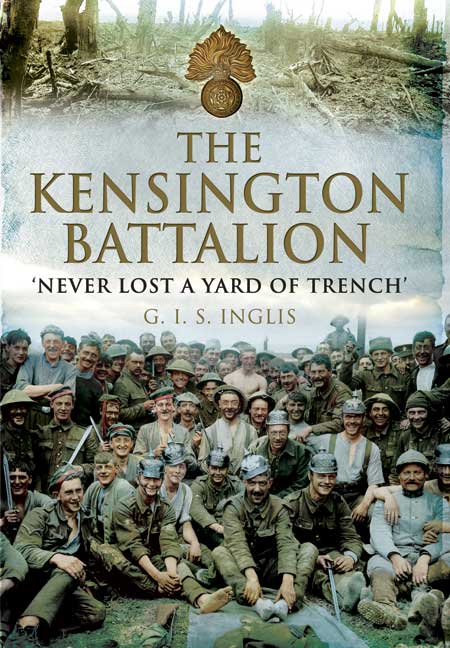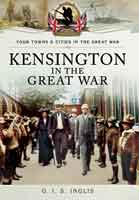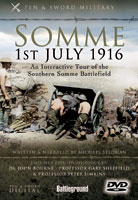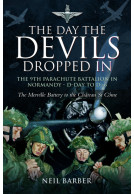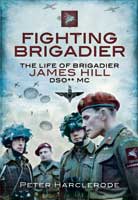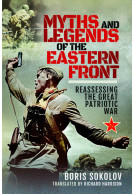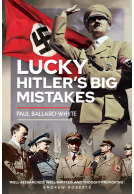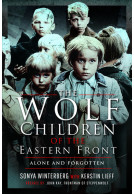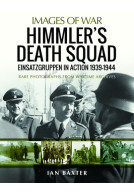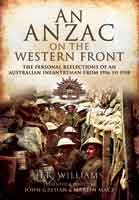The Kensington Battalion (Hardback)
Never Lost a Yard of Trench
Imprint: Pen & Sword Military
Pages: 272
ISBN: 9781848842472
Published: 27th October 2010
(click here for international delivery rates)
Order within the next 11 hours to get your order processed the next working day!
Need a currency converter? Check XE.com for live rates
| Other formats available - Buy the Hardback and get the eBook for free! | Price |
|---|---|
| The Kensington Battalion ePub (121.6 MB) Add to Basket | £6.99 |
Raised by the Mayor of Kensington, the 22nd Royal Fusiliers (the Kensington Battalion) were a strange mixture of social classes (bankers and stevedores, writers and labourers) with a strong sprinkling of irreverent colonials thrown in.Such a disparate group needed a strong leader and, luckily, in Randle Barratt Barker, they found one, first as their trainer and then as the Commanding Officer.As this superb book reveals The Kensington Battalion had a unique spirit and given their ordeals they needed this. They suffered severely in the battles of 1917 and, starved of reinforcements, were disbanded in 1918. Yet thanks to a strong Old Comrades Association, a special magazine Mufti, welfare work and reunions the Battalion s close spirit lived on.The author has successfully drawn on a wealth of first hand material (diaries, letters and official documents) as well as interviews from the 1980s to produce a fitting and atmospheric record of service and sacrifice.
Using diaries, letters and official documents. The Battalion was raised in the early days of the war by the Major of Kensington, an Ulsterman.
The Great War Magazine
Their biggest claim was that they never lost a yard of trench.
This is the story of one service battalion, the 22nd Fusiliers – a mix of social classes with a sprinkling of irreverent colonials mixed in. Using diaries, letters and official documents this work gives a good insight into army life during the war. The battalion was raised in the early days of the war by the Mayor of Kensington, an Ulsterman. The battalion had a unique spirit, even though they suffered severely in battles of 1917 and, starved of reinforcements, were disbanded in 1918. Their biggest claim was they they never lost a yard of trench.
MM, The Great War Magazine
A fitting tribute 10/10
Raised by the Mayor of Kensington, the 22nd Royal Fusiliers (the Kensington Battalion) suffered severely in the battles of 1917 and, starved of reinforcements, was disbanded in 1918. Drawing on a wealth of diaries, letters and official documents, as well as interviews from the 1980s, this is a fitting record of the battalion's service.
Britain at War
5 out of 5 stars!
Mrs. Vanessa R. Gebbie
'The Kensington Battalion - Never Lost a Yard of Trench' is an extraordinary piece of work - I am more than glad to have discovered it in my search for well-written, well-researched WWI books, for my own research purposes. Mr Inglis delivers a wealth of relevant facts in a style that never palls - he is not afraid to explore the human details, never forgetting that behind historical events there are always fathers, uncles, brothers and sons. It is to be highly recommended.
This new history of 22nd Battalion, Royal Fusiliers, is the product of decades of research. It shows. But any research, even with access to such an unusually rich archive, without a passion for the subject would not have delivered this outstanding tribute to those who served with the Kensington Battalion.
Jim Grundy, The Western Front Association
Geoff Inglis began work on "Never Lost a Yard of a Trench" in 1983 when there were ten Kensingtons still living. And Kensingtons they remained thanks to a remarkable post-war old comrades association despite being disbanded in February 1918 to provide the reinforcements denied to the army by Lloyd George.
Less associated with the ‘pals' movement than their northern counterparts, the Kensingtons were pals nevertheless. Perhaps their absence from the opening day of the Battle of the Somme didn't fit with that particular narrative but the battalion saw action enough during its service with the 2nd Division. Indeed, what Gary Sheffield calls in his foreword the ‘First of July syndrome' often blinds many to the totality of the Great War on the Western Front.
The Kensingtons' participation in the war did not begin and end with the Somme. This book gives due attention to the scale of the fighting in frequently neglected actions, such as that at Oppy Wood in April 1917, where another pals battalion, the Grimsby Chums, lost more men than they did on 1 July 1916.
Skilful use of first-hand accounts, woven deftly into the narrative provides the reader with a clear insight into the Kensington's experiences. And the continuation of the battalion's story and the community from which it came makes this an unusually complete history.
In one of the more hackneyed Second World War films, ‘633 Squadron', Harry Andrews delivers the line after all the aircrew were lost that "you can't kill a squadron". In this outstanding work, Geoff Inglis has ensured that the memory of all those who served in the Kensington Battalion will live on, too.
Interviews, diary entries, official documents and letters fill this strikingly accurate recollection of the services of The Kensington Battalion during the battles of 1917. With their unique spirit the rather unusual mix of bankers,writers, labourers and stevedores required a capable and resilient leader, and it was in Randle Barnett that this suitable character was found. Beginning first as their trainer, and steadily progressing to become their Commanding Officer, Barnett was soon able to gain huge amounts of respect for himself in his position, but this was not to last as 1918 witnessed the disbandment of the Battalion due to lack of reinforcement following their great suffering in the previous year. However, all hope was not lost, as a strong Old Comrades Association; welfare work; reunions; and a regimental magazine entitled 'Mufti', all helped to aid the survival of the Battalion, its sacrifices, and services. A recommended read for all readers interested in history and its warfare.
Brian R
The story of the 22nd Fusiliers; a strange mixture of social classes with a strong sprinkle of irreverent colonials thrown in. With diaries, letters, and official documents and illustrations throughout.
Military Times Jan 2011
A book focusing on a First World War battalion with strong links to Horsham has been pubished. Kimberley Heron and her mother Gwendoline Stokes, who live in the town, explained the significance of the book, 'The Kensington Battalion: Never Lost a Yard of Trench' to mark its release.
West Sussex County Times
Kimberley said: 'My grandmother was living in the Horham area from around 1913, following an apprenticeship in dressmaking and tailoring at Cart and Lawrence in Horsham.
"My grandfather was the 95th recruit to sign up to the 22nd in Kensington on September 11, 1914. Due to the issues with the war effort at the time, finding provision for these soldiers was difficult. "However, due to the command's connection with the Innes family of Horham, the recruits were billeted with actual families in Horsham, prior to the Roggey barracks being established. This was the beginning of the 22nd's long association with Horsham. "Grandma 'made herself known' to my grandfather - Alfred Keeble - while he was stationed with the 22nd at Roffey, prior to their departure for France. "The Story goes he would wait for her outside Chart and Lawrence and she would watch for him from the workroom windows overlooking the Carfax, which are now Waterstone's Cafe windows. "From the early 1980's the author of Never Lost a Yard of Trench - Geoff Inglis - fell upon the extraordinary history of the 22nd battalion, the individuality of its command and its connection with Horsham, hen he was in contact with my grandmother and indeed all of the remaining 'old comrades'.
"My grandmother herself died in 1988 but Geoff's book has now just been published and is centred on the very personal connections and experiences of an extraordinary collection of brave men - and a battalion that emanates from Horsham and not Kensington.
"The 22nd's connection with Horsham is often so sadly unrecognised, a number of Horsham men also having joined the 22nd once they were station in Roffey. Horsham was always the centre for 'old comrades' activities.
"Based on the significant information, photographs and reminiscences my grandma was able to provide for him, this is a very personal family remembrance of the dedication and bravery of this very special band of men."
Cobbled together in 1914, they were an undeniable group of men who believed in loyalty, duty and each other. They became the Kensington Battalion and in their letters they left honest and vivid accounts from No Man's Land, and memories of joking about in the trenches.
R Howard
I was struck by the story of 2nd Lt Jeffcoat who risked all, brought back barely alive but still wanting for his Colonel's approval before he died. At times, read more like a novel, it is absolutely incredible to think stories like this are still out there. You can see that it was properly researched and why such a spirited story endures.
Extraordinary, a real gem and highly recommended.
5 out of 5 stars
Chris Baker "The Long, Long Trail man"
One of the best modern histories of a "pals" battalion
Can there be any more Kitchener infantry battalions, especially the locally raised "pals", waiting to have a history written? Surely there can not be many. This one, the 22nd (Service) Battalion of the Royal Fusiliers - raised, as the title suggests, in Kensington in London - already has a good if rather short published history in Christopher Stone's "Short history of 22nd Royal Fusiliers in the Great War". So was Geoff Inglis' work necessary and is it a worthwhile purchase? In my view, a resounding yes on both counts.
This battalion benefits from having an unusually extensive archive and a good deal of published work covering its activities. This provides an excellent background for compilation of a detailed history. But "Never lost a yard of trench" goes further, not least due to the fact that the author met several battalion veterans, as the work on the book began many years ago and was interrupted for a long spell. The personal touch, as well as the author's evident expertise and enthusiasm, makes this one of the best of the modern pals histories - and that is going some, as there have been many fine examples of the art. The narrative is rich, detailed and the story well told, profusely illustrated with photographs and some good sketch maps.
The Kensingtons came under command of 99th Infantry Brigade, originally of 33rd Division, but transferred after arrival in France to the regular 2nd Division. It saw much action during the war, notably on the Somme, at Oppy (Arras) and Cambrai, before falling victim of reorganisation in early 1918 when the battalion was disbanded. "Never lost a yard of trench " is an excellent example of modern scholarship and writing, and a fine epitaph to an interesting unit.
About G I S Inglis
He was first moved by the story of the Kensington Fusiliers 30 years ago. With Gary Sheffield he edited the letters of one of its officers, Christopher Stone (From Vimy Ridge to the Rhine, Crowood, 1989), had various articles of social history published, then returned to tell the story of the battalion in The Kensington Battalion (Pen & Sword, 2010)







